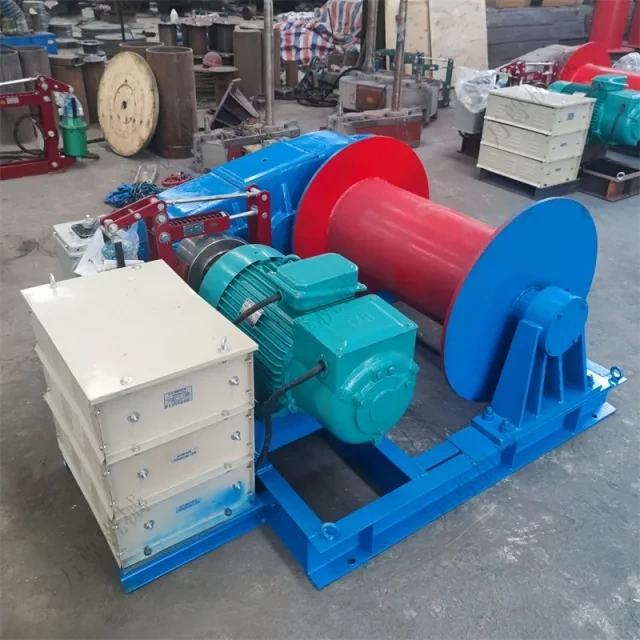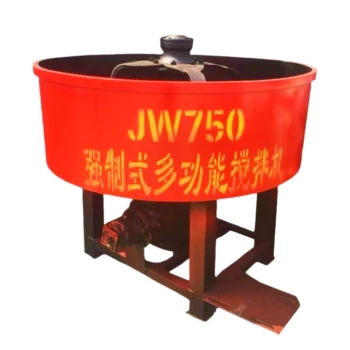Introduction
For decades, industrial equipment maintenance followed a reactive cycle—waiting for breakdowns before fixing problems. This approach leads to costly downtime, safety risks, and shortened asset lifespans. Modern predictive maintenance strategies flip this model by using data and intelligent systems to anticipate failures before they occur.
This article reveals a systematic approach to shift from reactive troubleshooting to predictive management, covering:
- Early warning sign recognition to detect degradation patterns
- AI-driven decision workflows that prioritize maintenance actions
- IoT monitoring technologies that optimize equipment health
- Inventory rationalization strategies to reduce spare parts waste
Designed for plant managers and maintenance teams, these methods help extend the lifecycle of critical machinery like winches and construction equipment while cutting operational costs.
Industrial Equipment Health Management
Early Warning Signs Recognition System
Predictive maintenance starts with identifying subtle indicators of equipment stress long before catastrophic failure. Consider these universal early warnings:
Vibration Anomalies
- Abnormal vibration patterns often precede bearing failures or misalignments
- Portable sensors or permanently installed monitors track changes in amplitude/frequency
Thermal Irregularities
- Infrared cameras detect overheating in motors, hydraulics, or electrical components
- Example: A 10°C rise in winch motor temperature may indicate lubrication breakdown
Performance Drifts
- Gradual declines in output efficiency (e.g., slower hoisting speeds) signal internal wear
- Power consumption spikes without load changes suggest mechanical resistance
Interactive Checkpoint:
Have you noticed "minor" operational quirks in your equipment that were later traced to major failures?
Intelligent Maintenance Decision Workflow
Detecting warnings is futile without structured response protocols. Implement this tiered action framework:
-
Automated Alerts
- Threshold-based notifications categorize issues as low/medium/high priority
-
Root Cause Analysis
- Cross-reference sensor data with maintenance logs to identify failure origins
-
Corrective Action Plans
- Schedule interventions during planned downtime windows
- For critical assets like construction winches, pre-stage replacement parts
Data-Driven Equipment Lifecycle Optimization
IoT Monitoring Technology Applications
Industrial IoT (IIoT) transforms maintenance by providing real-time equipment insights:
Wireless Sensor Networks
- Strain gauges on winch cables monitor load distribution and fatigue
- Corrosion sensors track environmental exposure in coastal job sites
Cloud-Based Analytics
- Machine learning models compare your equipment’s data against industry benchmarks
- Predictive algorithms forecast optimal lubrication intervals for gearboxes
Visual Metaphor:
Think of IIoT systems as a "fitness tracker" for machinery—continuously monitoring vital signs to prevent "health crises."
Spare Parts Inventory Rationalization
Predictive analytics reduces unnecessary inventory costs through:
-
Demand Forecasting:
Purchase seals, bearings, or hydraulic components only when degradation trends indicate imminent need -
Vendor Integration:
Partner with suppliers who offer just-in-time delivery for branded replacement parts -
Condition-Based Replacement:
Replace winch brake linings based on wear sensor data rather than fixed schedules
Conclusion: Building a Proactive Maintenance Culture
Transitioning to predictive maintenance requires both technological adoption and organizational change:
-
Start Small
Pilot IIoT sensors on 2-3 critical assets like hoists or cranes before enterprise-wide rollout -
Train Teams
Help technicians interpret data alerts rather than rely solely on experiential knowledge -
Measure Outcomes
Track metrics like mean time between failures (MTBF) and inventory turnover rates
For companies relying on durable machinery—whether Garlway winches or other construction equipment—these strategies turn maintenance from a cost center into a competitive advantage.
Final Thought:
When your equipment tells you it needs attention before breaking down, you’ve unlocked the true potential of industrial efficiency.
Related Products
- Commercial Construction Mixer Machine for Soil Cement Mixing Concrete
- JZC500 Large Cement Mixer Machine Price for Concrete Mix
- Hydraulic Concrete Mixer Machine Cement Mixing Equipment for Mixture Concrete
- Portable Concrete Mixer Machine Equipment for Mixing Concrete
- Shaft Mixer Machine for Cement and Regular Concrete Mixing
Related Articles
- How to Choose Concrete Mixers for Long-Term Reliability and Cost Savings
- Optimizing Concrete Mixer Safety: How Proactive Tire and Suspension Maintenance Prevents Catastrophic Failures
- How Concrete Mixers Achieve Perfect Homogeneity for Stronger Structures
- How to Maintain Hydraulic Systems in Concrete Mixers: A Safety-Focused Guide
- How to Master Concrete Mixer Operation: Training, Certification, and Safety Protocols


















